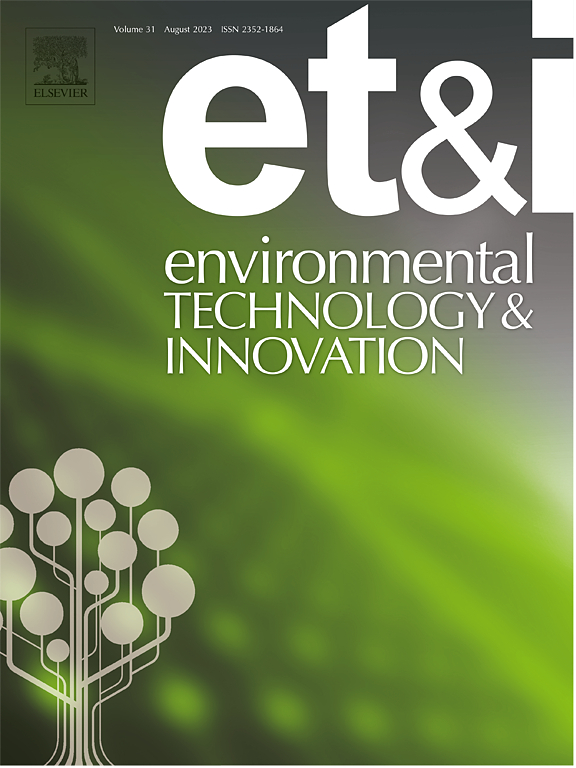评估紫外水处理泵系统的实时控制策略
IF 6.7
2区 环境科学与生态学
Q1 BIOTECHNOLOGY & APPLIED MICROBIOLOGY
引用次数: 0
摘要
使用紫外线辐射进行水处理的目的是通过抑制微生物的生长和繁殖来破坏微生物的发育和繁殖。紫外线处理已成为一种具有成本效益的解决方案,用于生产质量最佳的清洁饮用水,特别是在获取具有挑战性和至关重要的地区。紫外线水处理是一个复杂的过程,需要多学科团队的合作来解决科学问题。控制系统的实现面临着非线性、不确定性和延迟等挑战。考虑到紫外线辐射水处理的重要性和确保水质的必要性,控制紫外线照射强度(UVDose)和水流是至关重要的。本文的主要目的是利用键图方法实现离心泵电机的滑模控制律和状态反馈。目的是调节电机速度,从而调节水流速率。这可以影响水的细菌攻击时间,其中水在紫外线灯下的暴露时间决定了处理结果。得到的实验结果以及比较研究,使我们能够强调与状态反馈控制相比,滑模控制的鲁棒性。这些研究是根据应用于电机泵的不同参数的参数变化进行的。光伏源紫外水处理系统的设计本文章由计算机程序翻译,如有差异,请以英文原文为准。
Evaluating real time control strategies for UV water treatment pump systems
The purpose of water treatment using ultraviolet radiation is to disrupt the development and multiplication of microorganisms byinhibiting their growth and reproduction. Ultraviolet treatment has emerged as a cost-effective solution for producing clean and potable water of optimal quality, especially in regions where access is challenging and critical. UV water treatment is a sophisticated process that necessitates the collaboration of multidisciplinary teams to address scientific aspects. The implementation of control systems faces challenges, including non-linearity, uncertainty, and latency. Given the significance of water treatment through UV radiation and the imperative to ensure water quality, it is crucial to control both the lamp intensity (UVDose) and the water flow. The main objective of this article is to implement a sliding mode control law and state feedback for the motor of the centrifugal pump using the Bond Graph approach. The aim is to regulate the motor speed and, consequently, the water flow rate. This enables the influencing of the bacteriological attack time of the water, where the exposure time of water to the UV lamp determines the treatment result. The experimental results obtained, along with a comparative study, have allowed us to emphasize the robustness of sliding mode control in comparison to state feedback control. These studies were conducted following parametric variations applied to the different parameters of the motor pump. Design of the UV water treatment system powered by a photovoltaic source
求助全文
通过发布文献求助,成功后即可免费获取论文全文。
去求助
来源期刊

Environmental Technology & Innovation
Environmental Science-General Environmental Science
CiteScore
14.00
自引率
4.20%
发文量
435
审稿时长
74 days
期刊介绍:
Environmental Technology & Innovation adopts a challenge-oriented approach to solutions by integrating natural sciences to promote a sustainable future. The journal aims to foster the creation and development of innovative products, technologies, and ideas that enhance the environment, with impacts across soil, air, water, and food in rural and urban areas.
As a platform for disseminating scientific evidence for environmental protection and sustainable development, the journal emphasizes fundamental science, methodologies, tools, techniques, and policy considerations. It emphasizes the importance of science and technology in environmental benefits, including smarter, cleaner technologies for environmental protection, more efficient resource processing methods, and the evidence supporting their effectiveness.
 求助内容:
求助内容: 应助结果提醒方式:
应助结果提醒方式:


